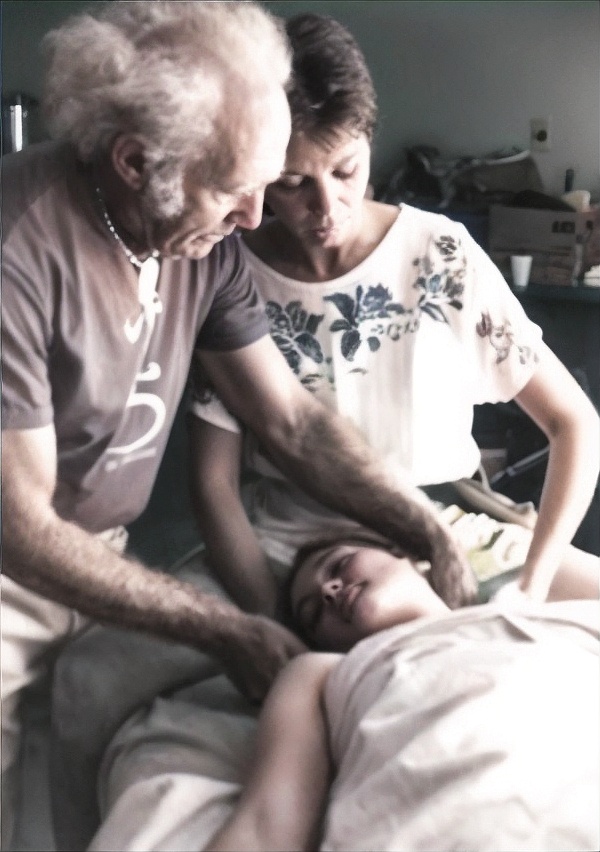
- This class has passed.
Trager® Level 1 & Certification – Seattle
March 13 @ 9:00 am - March 19 @ 6:00 pm

 Dr. Milton Trager, MD, recognized well before contemporary knowledge on neuroplasticity, autonomic regulation and current pain science, that new information introduced to areas in the unconscious mind, gently and with skill, activates positive neurological changes which improve movement patterns and decrease pain. He referred to his work as Psychophysical Integration.
Dr. Milton Trager, MD, recognized well before contemporary knowledge on neuroplasticity, autonomic regulation and current pain science, that new information introduced to areas in the unconscious mind, gently and with skill, activates positive neurological changes which improve movement patterns and decrease pain. He referred to his work as Psychophysical Integration.
Trager® Practitioners work in a calm, cultivated, meditative state, enhancing therapist efficacy, ease, and career longevity, facilitating neuroceptive co-regulation for client and therapist alike. Using the language of touch and movement they promote sensory awareness and ease of movement.
Trager® sessions include gentle integrative waves combined with compressions and elongations and within a variety of amplitudes, vectors and rhythms received in a calming, atmosphere. Cumulative in nature, this work promotes ease, physical mobility, and an enhanced sense of safety, agency and natural movement.
A mental, emotional and physical education, Trager® sends clients into the world with the physical efficiency and coordination that leads to effortless movement. Milton Trager called this feeling a place beyond relaxation, a place of peace.
Why Trager® Certification
Level 1 can be taken as a free standing course and is the first step of Trager Certification, a program designed for students who want to develop Trager® as a primary modality in their practice. It offers highly focused, in-depth training with the exploration, supervision, and feedback necessary for students to establish a successful Trager® practice. Being certified also allows the practitioner to market themselves with a tangible credential. Upon certification, with their permission, the US Trager® Association lists practitioners on its website as part of its referral network.
 What is Trager?
What is Trager?
Trager is a unique, neuromuscular approach to bodywork and movement re-patterning. The tablework consists of deep, fluid rocking movements (oscillations) of muscles and joints combined with compression and gentle traction. This feeds into the nervous system resulting in dramatic muscular relaxation, along with feelings of lightness, freedom and flexibility. The client is also shown simple exercises called mentastics which helps integrate the profound changes in the body.
 Milton Trager, MD, who became aware of the basic principles at the age of 18, spent over 50 years refining this unique approach to somatic movement therapy and bodywork, achieving high levels of success with effects of Parkinson’s, MS, Post Polio Syndrome, Back Pain, Migraine’s, and Chronic Pain, while helping patients reconnect to their inherent sense of ageless, ease and joy of movement.
Milton Trager, MD, who became aware of the basic principles at the age of 18, spent over 50 years refining this unique approach to somatic movement therapy and bodywork, achieving high levels of success with effects of Parkinson’s, MS, Post Polio Syndrome, Back Pain, Migraine’s, and Chronic Pain, while helping patients reconnect to their inherent sense of ageless, ease and joy of movement.
 Instructor:
Instructor:
Joseph Rodin is a licensed massage therapist, psychotherapist, and certified Trager® practitioner. His somatic background includes intensive study of Trager®, along with extensive coursework in osteopathic inspired manual therapy methods. Joseph took his first Trager® course in 1995 and returned to later to become certified in 2010. Since then, he has taught numerous Trager® introductory classes, mentored with and assisted senior Trager® instructors, been a Trager® Tutor and is the past President of the US Trager® Association and past member of the Board of Directors for Trager International. He’s presented on Trager and TMJ at Trager Conferences live, virtually, and for the Tragerology organization.
Joseph’s movement experience began with being a Yoga Instructor for fourteen years and a student of Afro-Brazillian Dance and Percussion. These inform his Trager® work as much as his varied background with psychotherapy and bodywork. In Seattle, in addition to seeing clients for psychotherapy, Joseph has a strong manual therapy practice with a clinical focus on headache, TMJ and chronic pain. He teaches courses around the Northwest and beyond in The Trager Approach, myofascial release, intraoral massage, craniosacral and more. His passion for teaching is based on empowering students to further develop their unique gifts, to convey both the art and science of manual therapy, and to use the path of bodywork as mindful contemplation and inquiry into the healing process for client and therapist alike.